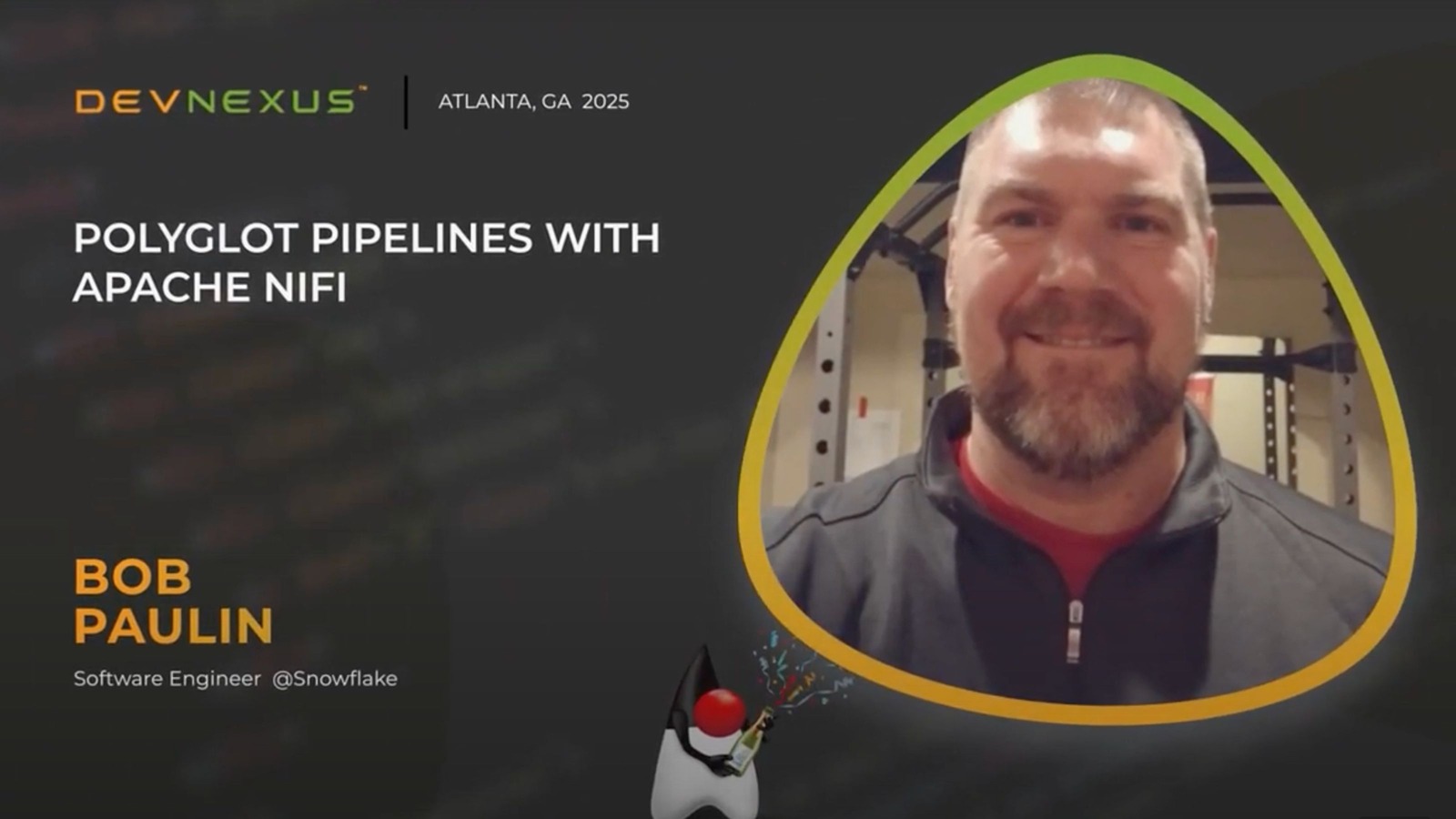Polyglot Pipelines with Apache Nifi with Bob Paulin

In today’s enterprise landscape, organizations are increasingly seeking to combine the strengths of Java-based infrastructure with the flexibility of Python’s thriving AI and machine learning ecosystem. In his Devnexus session, Bob Paulin explored this intersection in “Polyglot Pipelines with Apache NiFi,” presenting a practical blueprint for integrating Python’s cutting-edge data science capabilities directly into robust, Java-based NiFi workflows. The challenge is a familiar one: while the JVM offers scalability, reliability, and enterprise-grade orchestration, most of today’s AI innovation—libraries like NumPy, PyTorch, and Hugging Face Transformers—lives in the Python ecosystem. Attempting to force these tools into the JVM often results in dependency conflicts and painful maintenance overhead. Paulin’s key message was clear: developers shouldn’t have to choose between ecosystems—they can have the best of both worlds.
The heart of Paulin’s solution lies in NiFi’s Pi for J integration, which elegantly bridges the two languages without forcing a compromise. Instead of embedding Python directly into the JVM, NiFi spawns an isolated Python process alongside the Java runtime and communicates through lightweight local sockets. When a FlowFile passes into a Python processor, NiFi serializes its data and transfers it seamlessly as native Python objects—no awkward wrappers or unsafe bindings required. Even better, NiFi automatically provisions a virtual environment for each Python processor, ensuring complete dependency isolation and preventing version conflicts—much like how class loaders isolate Java packages. In a compelling live demo, Paulin showcased a Table Detection Processor that harnessed Hugging Face Transformers to extract structured data from images, outputting Coco-format JSON and annotated visuals—all within a standard NiFi data flow.
For developers, the implications of this approach are profound. By combining NiFi’s operational maturity with Python’s rapid innovation, teams can build truly polyglot, cloud-ready data pipelines that evolve alongside modern AI research. This approach empowers engineers to use Python for what it does best—data modeling, inference, and analytics—while maintaining Java’s strengths in performance and orchestration. As Paulin emphasized, embracing this balance ensures software evolves in tandem with its users: “The people using your software are the ones evolving it.” For teams looking to go even further, models can be converted to ONNX format for GPU-optimized inference running natively inside the Java environment. The session ultimately delivered a powerful message for enterprise developers: integrating Python and Java isn’t a compromise—it’s the next evolution of scalable, intelligent data systems.
🎥 Watch the Session
🚀 Join Us Next Year at Devnexus
Discover more sessions like this at Devnexus 2026 — where the global Java and cloud-native developer community comes together to share ideas, explore emerging technologies, and shape the future of enterprise software.



